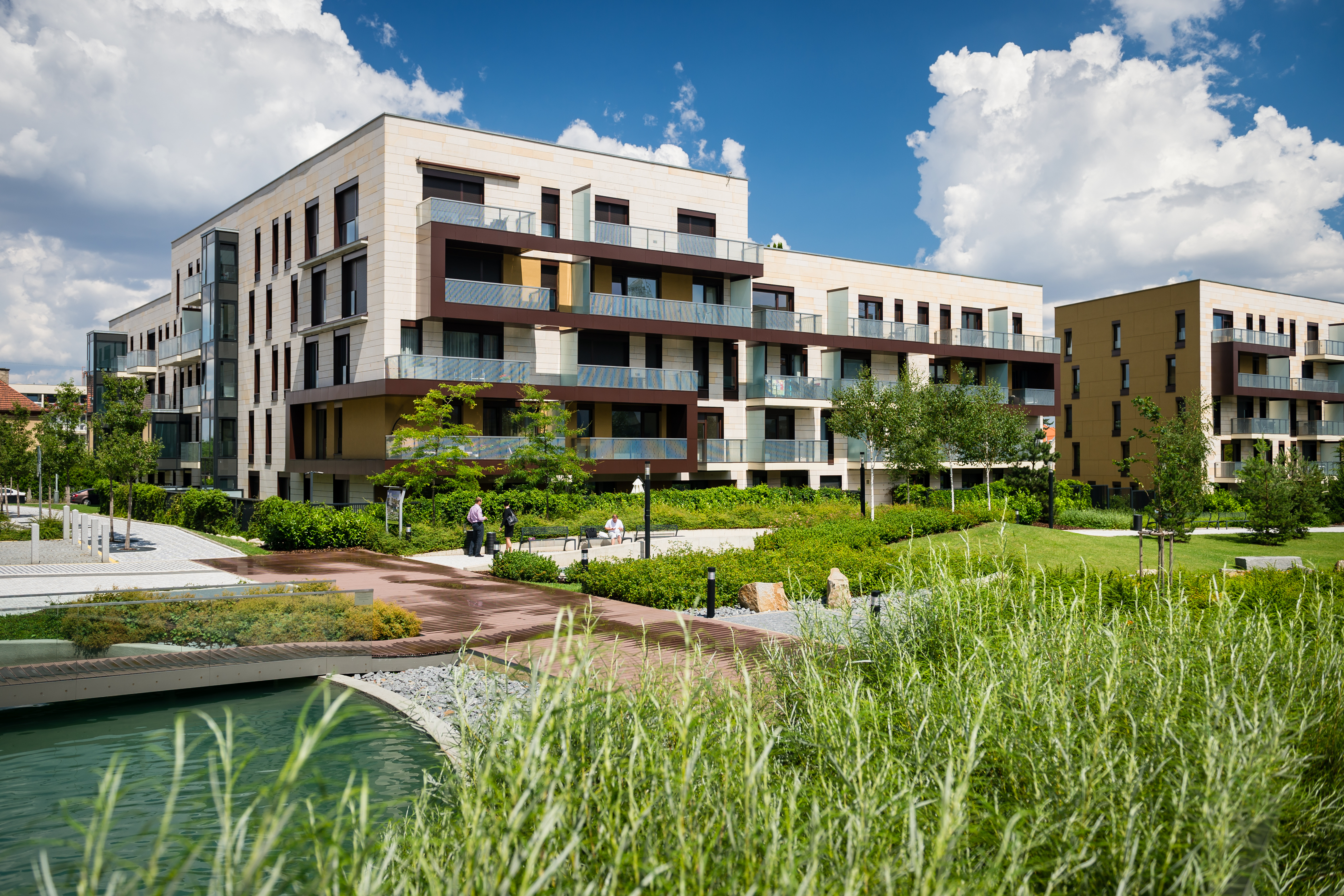How are property developers adapting to climate change?
Posted Friday, October 22, 2021

The term ‘net zero’ has become commonplace in most households, and with the UK government launching its Heat and Buildings Strategy this month, reducing greenhouse gas emissions to net-zero by 2050 means it’s time to look at improving the efficiency of systems. There are several ways that buildings can be impacted by climate, and they in turn also have an impact on climate change. Here we explore how the property sector will play its part.
If you read our climate change series (written in 2019), you’ll know that the property sector contributes hugely to climate change via intensive use of freshwater, irreplaceable natural resources, and energy. Buildings have an expected lifetime of between 20 and 100 years, so thinking about climate change now, when planning for future new developments, will help address these issues. Buildings and their locations could all be adversely affected by climate change, including their structural dynamics, external makeup, internal environment, and service infrastructure.
According to Propertymark the Heat and Buildings Strategy allocates £3.9 billion of funding across the following schemes in England:
- £450 million for a Boiler Upgrade Scheme enabling homeowners to access grants of £5,000 to fund the installation of low-carbon heating systems
- £950 million for a Home Upgrade Grant Scheme for improving the energy performance of low-income households’ homes
- £800 million for a Social Housing Decarbonisation Fund to upgrade a significant proportion of social housing stock to EPC band C rating
- £338 million for the Heat Network Transformation Programme to scale-up low-carbon heat network deployment to facilitate low-carbon heat network market growth
- £1.425 billion for a Public Sector Decarbonisation Scheme to support jobs in the low-carbon and energy efficiency sectors
The Strategy hopes that the incentives unveiled will enable the UK's households to gradually move away from fossil fuel boilers in an "affordable and fair way".
Additionally, the government is providing up to £65 million to support the transition to a greener future via its Smart Systems & Flexibility Plan 2021 which forms part of the government’s commitment to invest in “energy storage and flexibility innovation changes.”
The plan, which looks to help consumers reduce their energy bills, discusses smart technologies, policy and regulatory barriers facing electricity storage, and the importance of digitalising a more flexible energy system. But is this enough?
Given that between 20% and 40% of UK carbon emissions are created by heating properties (depending on factors such as size and age), is there a greener way to stay warm, and how will developers adapt? According to the National Grid “over 20,000 homes, every week will need to switch to a low carbon heat source between 2025 and 2050.”
HEATING (& COOLING)
In 2025 gas boilers in new builds will be banned, and the likelihood is that heat pumps will replace them. A good option for anyone looking to buy a new build in the future, but what about now? There is funding available for this alternative heat source, but this is currently limited to £5,000, so with the average cost of installation being £6,000 upwards, is this an affordable option that will catch on? To get any return on this investment homeowners will need to stay put for many years, and with the average house move dropping from 4 times in a lifetime to just 2, this may well be a cost-effective solution long term. But we have a long way to go – currently, fewer than 1% of homes in England use a heat pump, indicating more confidence in these eco-systems is needed.
2019 was the second warmest year on record and the warmest decade (2010-2020) ever recorded. Whilst the UK’s summer temperatures are not yet on a par with countries more used to extreme heat, this year has given us a glimpse of what it’s going to be like to live and work in an uncomfortably hotter climate. It is undeniable that air conditioning will become necessary in homes and buildings, and preferably powered from a renewable source.
ENERGY SOURCING
Developers are beginning to respond to the climate challenge – the need to provide a product that will not only contribute to a lower carbon footprint but will attract home buyers, and renters. Options that are not just for heating but lighting, power, and air conditioning systems – for example ‘district heating’, also known as ‘heat networks’ that distributes heat generated in a centralised location using different sources such as biomass, geothermal and solar may be a solution.
BUILDING MATERIALS
Embodied carbon is another area being scrutinised by the industry, with lower carbon options such as steel, cement, or plasterboard replacing many traditional construction materials. Simple changes such as using recycled concrete or cross-laminated timber (CLT) will in the long term make a considerable difference.
MONITORING
How buildings monitor carbon emissions will change too. The use of high-tech systems will identify opportunities for cutting energy bills, and sensor controls (such as lighting, heating, and air conditioning) can turn systems off when not needed.
PLANNING
As climate change evolves, there will undoubtedly be more natural and environmental factors to consider. Planning for the future will mean developers and property investors will need to be more aware of the land and building’s ability to cope, such as:
- Adapting to minimise the risk of flooding on new developments
- Adapting to respond to water resources and water supply issues
- Adapting to respond to water related impacts on built structures (e.g., increased weathering or damage).
Futureproofing homes will mean looking at things differently, for example, it is important that if Sustainable Drainage Systems (SUDS) are needed, they should be designed and built-in at the outset of development. The likelihood of increased flooding may become a larger factor in the choice of location. Higher temperatures cause more issues for cities that create ‘urban heat islands’, which will require consideration for developers to allow for more green spaces. Other factors that will become the norm for consideration include water resources, drainage, subsidence, and coastal erosion.
BIODIVERSITY
People are planting urban forests to boost biodiversity and fight climate change. Trees not only have a beneficial effect on our well-being they help to cool the air and reduce the effect of pollution. With that in mind, developers are looking increasingly to the benefits of community building via Public Open Spaces (POS) and other green spaces to prolong natural habitats. Managing agents not embracing this side of environmental management may lose out, as developers look to choose agents that can demonstrate a high level of expertise in this arena.
CHANGE
Will we see a different type of development in the future? The answer is ‘yes’ and as all industries work towards creating a greener environment, there is hope for more efficient systems and smarter solutions, and whilst the initial cost for these may be higher, in time they will surely level out. The property sector is changing, and property management will also be required to adapt.

